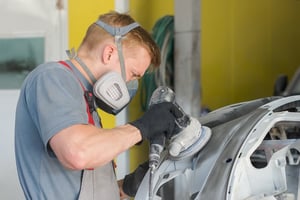
Metalworking dust is an everyday reality in fabrication shops. Grinding throws particulates into the air, laser cutting creates ultra-fine residue, and welding can add additional fumes and fine particles to the mix. Without the right controls, that material doesn’t stay at the workstation - it drifts, settles, and builds up across the facility.
Metal dust is the fine particulate created when metal is cut, ground, machined, or finished. Once airborne, it can reduce air quality, contaminate equipment, increase housekeeping demands, and create safety concerns depending on the metal and the process.
The goal isn’t a spotless shop. It’s a controlled one - where dust is captured as close to the source as possible, background haze is reduced, and exposure is managed through practical systems and routines. In this guide, we’ll walk through strategies to minimize the nuisance of metalworking dust and support safer, more reliable day-to-day operations.
What is Metal Dust?
Metal dust is the fine particulate released during welding, laser cutting, grinding, or machining. These particles often contain metallic compounds that pose respiratory, fire, and equipment hazards when they become airborne.
Why Metal Dust Matters
Metal dust isn’t just “messy.” Fine particulates can be inhaled, and occupational exposure has been associated with health issues in industrial settings. In certain operations, metal dust can also present combustible dust concerns, especially with some metals and fine dust conditions.
You’ll typically see a few common categories on metalworking floors:
- Stainless steel dust from grinding and finishing stainless components
- Aluminum dust, common in grinding, sanding, and finishing, and often treated with extra caution due to combustibility considerations
- Ferrous dust from iron and steel, which can be abrasive and persistent
Fine metal particulates can be a respiratory concern, and some metalworking processes can introduce higher-risk exposures depending on how the material is worked. Always reference the material SDS and your exposure monitoring program when determining the appropriate control approach.
Beyond worker exposure, airborne metal dust can settle into equipment - affecting sensors, electrical enclosures, and moving components. Over time, this increases maintenance demands and contributes to nuisance faults and unplanned downtime.
From a compliance standpoint, OSHA and NFPA guidance emphasizes controlling airborne dust, minimizing accumulation, and reducing ignition potential - not simply relying on PPE alone.
Strategy 1: Industrial Dust Collection System for Ambient Air
In this context, ambient air refers to the general air in the building - outside of ducts, hoods, or enclosed capture zones. Ambient air dust collection is designed to clean air across large spaces, rather than pulling dust directly off a single tool. In other words, source capture targets a small area intensely; ambient systems improve overall air conditions across a wider footprint.
Compared to source capture, ambient air systems are usually best when:
- Dust is generated across multiple stations
- Work moves around or dust clouds drift
- A facility-wide reduction in background haze and settled dust is needed
Most ambient solutions in metalworking use cartridge dust collectors, where filter media traps particulate as air moves through the system. Two simple performance concepts matter here:
- Differential pressure (DP): A signal of how hard the system is working; as filters load, DP rises
- Air-to-cloth ratio: A sizing metric that ties airflow (CFM) to filter area; higher ratios push more air through less media, while lower ratios generally allow gentler loading and longer filter life, depending on the application
Ambient metal dust is difficult to manage because it doesn’t stay in one place. Stainless steel dust, aluminum dust, and ferrous dust can accumulate on overhead surfaces and become re-aerosolized through foot traffic, door movement, or compressed-air blowdowns.
That’s why sizing matters. A properly sized system needs enough airflow for the volume of air being cleaned and the dust load being generated - so the system reduces haze effectively instead of “filtering forever” while conditions stay the same.
A.C.T. Dust Collectors has supported ambient air dust collection in laser cutting, welding, and general fabrication environments where facilities want lower background haze and better overall air conditions.
Takeaway: Ambient air systems are ideal for reducing facility-wide dust buildup, but they work best when paired with source capture at the dirtiest tools.
Strategy 2: Add Washing and Changing Practices So Dust Doesn’t Leave With Your Team
Metal dust doesn’t stop at the exit door. Fine particulates can cling to clothing, gloves, boots, and hair, then transfer to vehicles and homes.
PPE helps, but PPE is only one layer of protection. On-tool extraction is more effective than relying on PPE alone, because it removes dust before it reaches breathing zones and clothing.
Practical steps many industrial facilities use include:
- Separate clean and dirty storage (lockers or cubbies)
- Designated changing areas for dusty tasks
- Hand and face washing stations near production zones
- Clear procedures for handling contaminated workwear, including bagging, storage, or employer-managed laundering
OSHA sanitation guidance addresses workplace washing facilities and hygiene practices, and OSHA has also discussed take-home contamination risks in certain regulated contexts.
Takeaway: Strong hygiene controls reduce take-home exposure and help limit the dust trail from the shop floor to breakrooms, vehicles, and homes.
Strategy 3: Use Source Capture With On-Tool Extraction and Booth Systems
When metal dust is generated at a specific point - such as grinders, chop saws, handheld sanding, or deburring - source capture is the most direct control method.
On-Tool Extraction (LEV)
On-tool extraction is a form of local exhaust ventilation (LEV) that captures dust at the point of generation, before it becomes airborne. It’s especially effective for:
- Hand grinders and sanders
- Saws and cutting tools
- Portable finishing stations
When applied correctly, it reduces airborne dust and the amount that settles on equipment and surrounding surfaces.
Booth Dust Collection Systems
Booth systems offer more containment than open-floor setups by controlling airflow direction and pulling dust away from the operator into a defined capture zone.
Booths are often used when:
- Dust loads are high at a workstation
- Consistent capture is needed without chasing drifting dust clouds
- A defined work zone is required for finishing, blasting, deburring, or sanding
A.C.T.’s ACTion Booth is one example of a booth-style system used in metalworking applications. Configurations may reference airflow around 5,400 CFM with a 7.5 HP blower (model-dependent), along with service access designed for tighter floorplans.
Takeaway: Choose source capture when dust is created at a known point. Use ambient air systems to support the rest of the facility between stations and after shifts.
Application-Based Guidance
Dust control works best when it matches the process:
- Welding dust and fumes: Often ultra-fine; source capture or well-planned ambient systems may both play a role depending on layout
- Laser cutting dust: Very fine particulate with potential spark considerations; enclosed or well-engineered capture is typically required
- Grinding dust: Heavy dust loading and persistent settle-out; on-tool extraction and booths are often effective
- Stainless steel dust: Some operations require additional care depending on exposure profile; high-efficiency filtration, tight containment, and proper handling help reduce risk
For a visual example of booth-style capture, A.C.T. hosts an ACTion Booth demo.
How to Choose the Right System
Choosing the right dust collector depends on understanding your facility's specific needs. Here's where to start:
- Facility size and layout: Large open bays with multiple dust sources typically need a layered approach - source capture where metal dust is generated, plus ambient air cleaning to reduce background haze. Smaller, contained work cells may only need booth systems or on-tool extraction.
- Dust type and process: Welding fumes behave differently than grinding dust. Laser cutting produces ultra-fine particulates. Grinding creates heavier, more abrasive dust. Each affects airflow requirements, filter media selection, and whether enclosed containment (like a booth) makes sense for your operation.
- Airflow and filtration requirements: Getting CFM calculations right matters. Undersized systems leave dust in the air. Oversized systems waste energy and increase costs. Consider expected dust loading, differential pressure trends over time, and how easy it is to service filters and access components.
Working with an experienced dust collection provider ensures system sizing, filter selection, and airflow design match your specific metalworking applications - whether that's welding, laser cutting, or mixed fabrication.
FAQs
What is metal dust?
Metal dust is fine particulate produced during metalworking processes such as grinding, machining, laser cutting, and welding. These particles can become airborne easily, settle throughout a facility, and be inhaled without proper controls.
Is metal dust a health hazard?
Metal dust can be a health hazard because fine particles may enter the respiratory system. The level of risk depends on concentration, particle size, and composition. Treat unknown dust as potentially hazardous, reference the SDS, and prioritize engineered controls over PPE alone.
What’s the safest way to control stainless steel dust?
A layered approach works best: capture dust at the source using LEV or booths, support the space with ambient air cleaning if needed, and prevent re-aerosolization through good housekeeping. Proper filtration and sealed ducting are especially important.
Does OSHA require dust collection for metalworking?
OSHA requirements depend on the hazard and exposure scenario, but OSHA guidance emphasizes preventing dangerous dust accumulation, controlling airborne dust, and maintaining safe working conditions. Dust collection is one of the most common engineering controls used in metalworking environments.
Need an Industrial Dust Collector?
Minimizing metal dust usually comes down to three moves: clean the ambient air where dust spreads, stop dust from leaving with employees, and capture dust at the tool or in a booth whenever possible. No single control solves every problem, but layering these strategies delivers safer, cleaner, and more reliable operations.
If you want help mapping the right approach for your welding, laser cutting, grinding, or mixed metalworking environment, explore A.C.T. Dust Collectors or talk to our team about your application. With service and support locations across the U.S., A.C.T. works with facilities nationwide to design dust collection solutions that match real-world metalworking operations.


























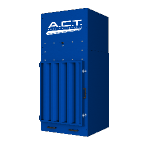
%20Collectors%20Image.png?width=143&height=143&name=ADC%20(Ambient)%20Collectors%20Image.png)
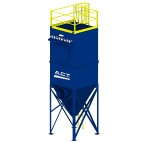

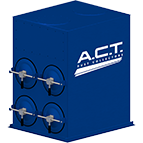
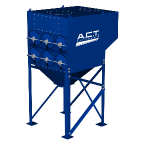
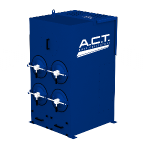


















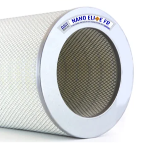


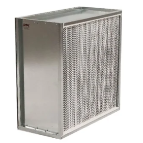

.png?width=240&height=91&name=ACT%20Dust%20Collectors%20Logo%20Solid%20White%202020%20(1).png)
.png?width=148&height=149&name=usa-manufactured-dust-collectors%20(1).png)